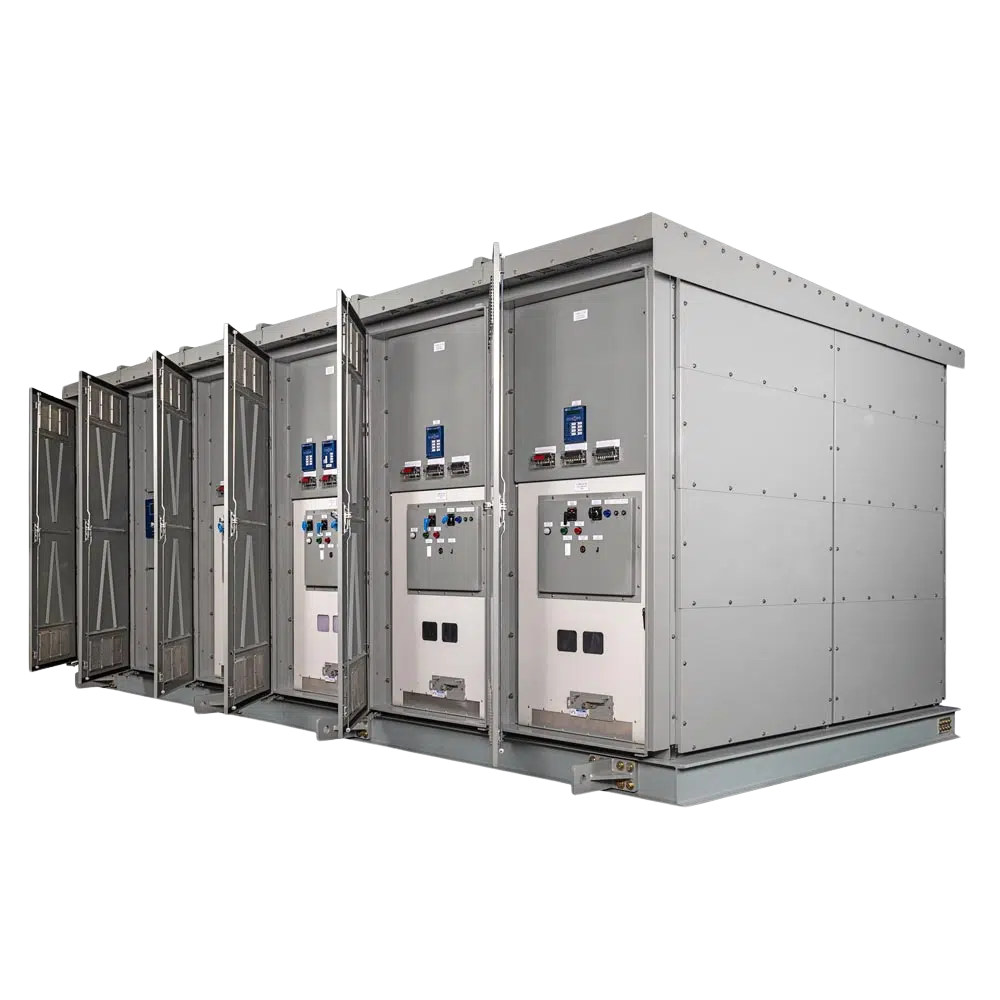
How to Validate Performance, Compliance, and Safety the Right Way
In the high-stakes world of electrical infrastructure, upgrading switchgear through conversion is only half the battle. The real test comes when it’s time to energize. And the only way to ensure your system is safe, compliant, and built to last is through proper testing.
Switchgear conversions, especially those involving relay upgrades, arc flash mitigation, or structural changes, must meet strict standards defined in documents like IEEE C37.59-2018. These testing protocols aren’t just formalities—they are safety-critical steps that ensure performance and protect both personnel and assets.
In this blog, we break down the essential types of testing your switchgear conversion must pass, why they matter, and how to avoid the common pitfalls that occur when testing is skipped, rushed, or done incorrectly.
Why Testing Is Required Post-Conversion
Switchgear is engineered to exact specifications, and any deviation from the original configuration—whether mechanical, electrical, or protective—introduces risk. Testing verifies that those changes:
-
- Maintain original or upgraded ratings
- Meet industry performance and safety requirements
- Do not compromise insulation, interlocks, or protective logic
- Satisfy UL/NRTL listing requirements where applicable
According to the IEEE C37.59-2018 standard, testing must confirm that all retrofitted components operate correctly within the converted system. Testing is especially critical when modifying structural compartments, protection relays, insulation systems, or arc flash mitigation components.
Core Testing Categories for Switchgear Conversions
1. Dielectric Withstand Testing
This verifies that the switchgear can handle voltage stress between live parts and ground without failure. It’s performed on:
-
- Buswork
- Insulated components
- Retrofit barriers and adapters
2. Insulation Resistance Testing
Ensures insulation systems (bushings, cables, supports) meet resistance values required to prevent leakage and breakdown.
-
- Often performed with a megohmmeter
- Helps predict aging or damage from installation
3. Functional and Protection Testing
Critical for any relay or control upgrade:
-
- Trip circuit verification
- Relay logic testing and settings validation
- UFES system testing and timing validation
- Verification of SCADA integration and remote status/alarm signaling
4. Mechanical and Interlock Testing
-
- Checks the alignment and function of racking systems
- Validates MOC (mechanism-operated contacts), TOC (truck-operated contacts), and any custom interlocks added during retrofit
- Ensures personnel safety through physical lockout mechanisms
5. Short-Circuit and Load Path Verification
If structural changes were made, bus reinforcements or load paths must be verified against original or updated fault current ratings.
FAT vs. SAT: What’s the Difference?
Factory Acceptance Testing (FAT)
Performed before equipment leaves the shop or before retrofit kits are delivered:
-
- Verifies function of relays, breakers, wiring harnesses
- Confirms proper assembly and logic
- Checks firmware and hardware compatibility in relay packages
- Simulates protection schemes and verifies coordination on lab-grade benches
- Can include witness testing by customer or third-party representatives
Site Acceptance Testing (SAT)
Performed after installation on site:
-
- Verifies installation quality, wiring correctness, grounding
- Includes live relay trip testing, breaker timing, arc mitigation system verification
- Ensures that all control and communication wiring operates under real-world conditions
- Validates SCADA integration, alarms, remote signaling, and emergency stop systems
- Verifies coordination settings reflect actual field conditions, updated arc flash study results, and protection logic
Training and Maintenance Planning
SAT isn’t just about flipping the switch — it’s also the best time to train your operators and maintenance teams. Spike Electric offers:
-
- On-site relay training for understanding protection settings, trip diagnostics, and event logs
- Hands-on breaker racking and inspection training
- Guidance on how to interpret relay front panel screens or HMI alarms
- Documentation packages that include updated relay settings files, user manuals, and wiring schematics
Long-Term Maintenance Considerations
After testing and energization, long-term success depends on a solid maintenance strategy. We help clients:
-
- Set up periodic testing intervals for insulation resistance and relay calibration
- Establish cleaning and mechanical inspection routines for breakers and interlocks
- Identify spare part requirements and restock needs
- Prepare for future expansion by documenting spare relay I/O and unused control terminals
At Spike Electric, we perform both FAT and SAT for every conversion project we complete — and we ensure your team is trained, your gear is documented, and your operation is ready for the long run.
Common Testing Mistakes (And How to Avoid Them)
Even the most well-planned switchgear conversion can fail if the testing phase is rushed or executed incorrectly. These are some of the most common and impactful mistakes observed in the field, aligned with guidance from both IEEE C37.59-2018 and ANSI/NETA ATS standards:
-
- Skipping Pre-Testing Walkdowns: Before initiating any testing, a comprehensive visual and mechanical inspection must be conducted. According to ANSI/NETA ATS, this includes verifying proper labeling, checking for foreign objects, ensuring mechanical freedom of moving parts, and confirming torque on all terminations. Missing this step can result in failed tests, equipment damage, or unsafe energization.
- Improper Relay Programming and Coordination: Testing a relay without a full understanding of the protection scheme is dangerous. Protection settings must be calculated using up-to-date short-circuit and coordination studies. NETA requires verification of relay trip timing, logic paths, and communications—especially when integrating with SCADA or zone-selective interlocking. Copying settings from similar equipment without a proper study can result in either nuisance tripping or failure to isolate a fault, both of which pose major risks to system integrity.
- No UFES Commissioning or Timing Validation: Ultra-Fast Earthing Switches (UFES) are only effective when correctly integrated into the protection logic. ANSI/NETA standards require that arc mitigation systems be tested not only for installation integrity but also for operational timing. Improperly calibrated UFES systems can delay fault clearing and render the arc flash mitigation plan ineffective. Testing must include end-to-end verification—from arc detection relay to grounding path execution.
- Neglecting Ground Fault and Insulation Resistance Testing: Insulation resistance and ground system tests are fundamental to post-conversion safety. ANSI/NETA outlines specific testing voltages and minimum acceptable resistance values, depending on equipment class and voltage level. Failing to document and evaluate these results can mask degradation in insulation systems or improperly bonded ground paths.
- Insufficient Documentation and Data Logging: Every test performed—whether a megger test, functional relay test, or breaker timing evaluation—must be recorded with test values, observations, pass/fail status, and technician notes. The ANSI/NETA ATS standard emphasizes the importance of maintaining test records for future audits, maintenance planning, and baseline comparisons. Without thorough documentation, the client has no benchmark or verification trail for system performance.
- Lack of Operator Familiarization and Functional Review: NETA and IEEE standards emphasize post-test review with the end user. The operating team should understand:
- What changes were made
- What tests were performed
- What their responsibilities are for routine inspection and logging
- How to read and reset protection relays
- Where to find documentation and relay settings files At Spike Electric, we dedicate time to this process because we believe a trained operator is your first line of defense against faults.
- Failing to Retest After Repairs or Modifications: NETA requires retesting after any failure or component change during the testing process. If, for example, a breaker fails a timing test and is replaced or adjusted, the system must be retested from the beginning to confirm compliance. Skipping this step undermines the entire validation process.
Avoiding these pitfalls takes more than just good equipment—it requires disciplined execution, expert oversight, and a thorough understanding of standards. Spike Electric brings all of that to the table.
Why Testing with Spike Electric Is Different
We don’t just test to check a box. We test to validate, protect, and optimize. As a full-service switchgear manufacturer and field services provider, Spike Electric approaches testing with the same engineering rigor and attention to detail that goes into building the equipment itself. We view post-conversion testing not just as a final task, but as an integral phase of system validation—where design, fabrication, and field realities must align.
Our test procedures are grounded in IEEE, ANSI, and NETA standards, and are tailored to the specifics of each retrofit or upgrade project. We integrate advanced protection relay programming, custom control schemes, and site-specific arc flash mitigation strategies into our test workflows.
Our capabilities include:
-
- NETA-level electrical testing and documentation—including insulation resistance, breaker timing, functional logic, and interlock verifications.
- Relay coordination and logic validation by licensed engineers—ensuring that trip settings, UFES integration, and selective coordination meet the requirements of both short circuit studies and protection philosophy.
- UL and NRTL listing coordination—for retrofits involving structural or electrical modifications that may impact certification. We work directly with UL, ETL, or Intertek when required to ensure compliance.
- Custom test scripts, device configuration files, and HMI interaction validation—especially for SCADA-integrated and communication-enabled protection systems.
- System-wide coordination studies and arc flash assessments—updating the facility’s documentation and training maintenance teams on safe work procedures, labeling, and relay reset functions.
Unlike general contractors or testing-only firms, we understand the full lifecycle of the equipment we modify—from the drawings and fabrication to field startup and long-term maintenance. That’s what makes our testing process different: it’s not just about passing a test—it’s about making sure the system performs as expected under load, under fault, and under pressure.we stand behind our testing process with engineering-grade precision.
FAQs
What testing standards should be followed during a switchgear conversion?
Testing should be performed according to IEEE C37.59, ANSI/NETA ATS, NFPA 70B, and, where applicable, UL/NRTL standards. These govern mechanical, insulation, dielectric, protection, and performance testing.
What documentation should be provided after testing?
You should receive a full turnover package including: relay setting files, updated one-lines, test reports (megger, trip, functional), coordination study updates, arc flash labels, and operator training records.
Do I need to notify UL if my switchgear has been modified?
Yes, if the switchgear was originally UL-listed and the conversion involves breakers, bus, or structure changes, it may invalidate the listing unless recertified through UL or another NRTL.
What happens if my UFES or arc mitigation system isn’t tested?
An untested UFES system could fail to operate during a fault, exposing workers to serious arc flash risk. It must be tested with protective relay logic and grounding paths as part of system commissioning.
Can in-house electricians perform FAT or SAT?
Only if they are qualified, trained on the gear being tested, and working under documented procedures aligned with IEEE and NETA. Otherwise, third-party engineers or manufacturer field service techs should oversee it.
Should the facility staff be trained before energization?
Yes. Operator and maintenance training should be conducted as part of SAT. They should understand relay functions, alarm resets, and basic inspection routines to maintain the system safely.
Final Thought
Testing is where theory becomes reality. It’s the final step that proves your switchgear conversion is safe, smart, and compliant.
If your vendor isn’t testing to engineering-grade standards, you’re rolling the dice with your operation’s future.
Spike Electric delivers conversions that are tested, documented, and ready to perform. Reach out today to learn how we can help you upgrade safely and with confidence.


